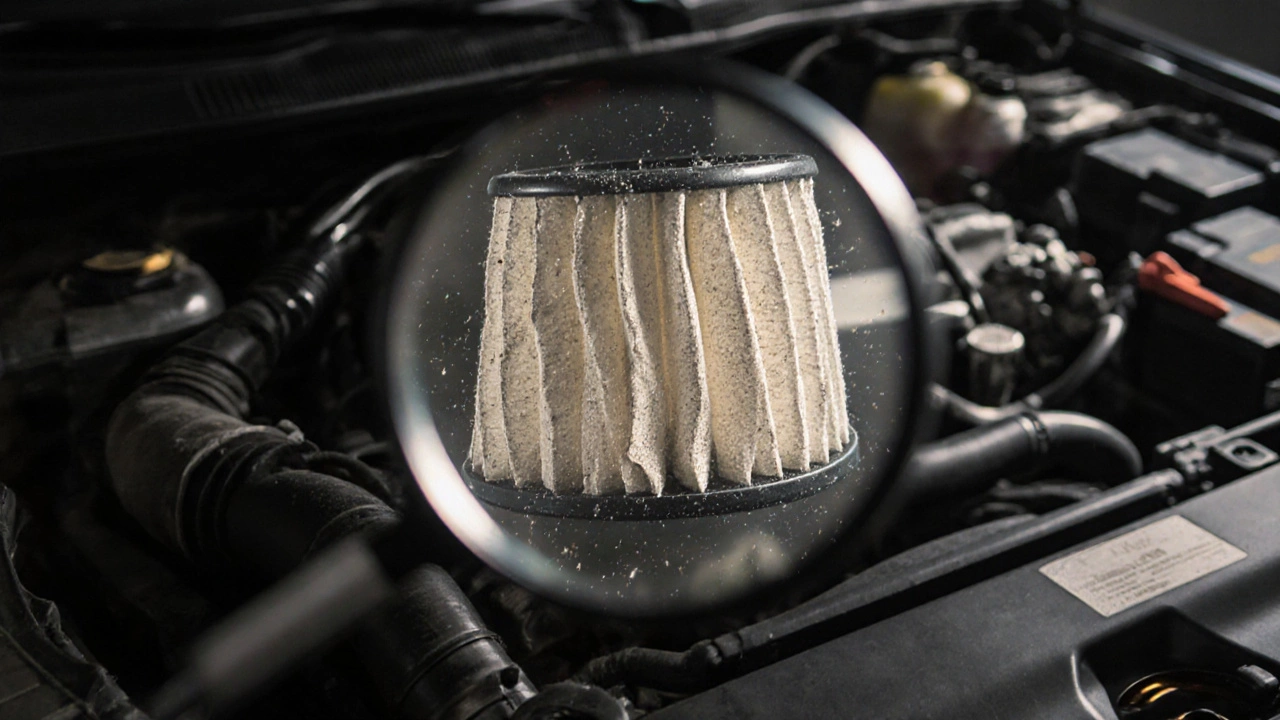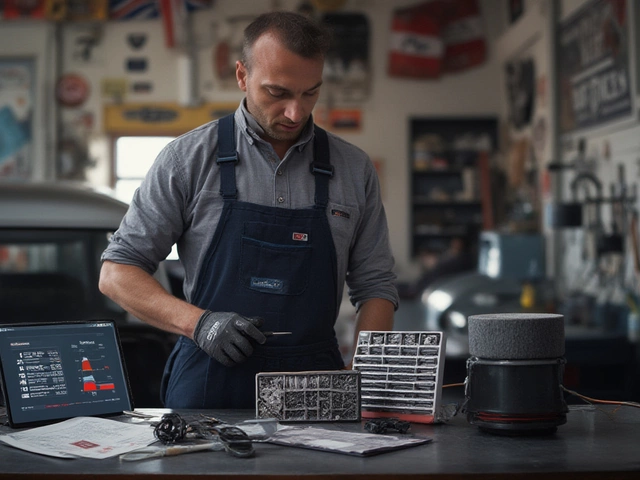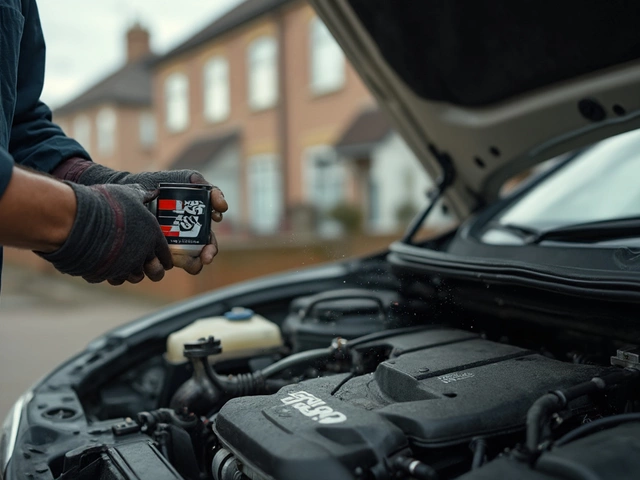Air Filter Cost Calculator
Your Vehicle Information
Key Considerations
Cost Comparison Results
Enter your vehicle details above to see your cost comparison.
Let’s cut to the chase: if you’re spending $80 on an air filter instead of $15, are you getting real performance - or just a fancy badge?
What’s Actually Inside a Performance Air Filter?
Most stock air filters are made of pleated paper. They’re cheap, effective at trapping dirt, and designed to last the life of your car under normal driving. Performance filters, on the other hand, are usually cotton gauze wrapped in a metal frame, soaked in oil, and reusable. Brands like K&N, Injen, and AEM make these. They claim to let more air in, which supposedly boosts horsepower and torque.
Here’s the thing: in a real-world test by Car and Driver on a stock 2.0L turbo four-cylinder, a high-flow filter added 3 to 5 horsepower at the wheels. That’s it. No magic. No dramatic gains. And that was on a dyno with perfect conditions. On the road? You won’t feel it.
Do They Improve Fuel Economy?
Some manufacturers say yes. They claim better airflow means the engine doesn’t work as hard, so it uses less fuel. But real data doesn’t back that up. A 2023 study by the Society of Automotive Engineers tracked 1,200 vehicles with aftermarket filters over 18 months. The average fuel economy change? Zero point two percent. That’s less than a cup of coffee worth of savings per month.
What you might notice is a slight change in engine sound. Some people like the louder intake noise - it makes the car feel more aggressive. But that’s not performance. That’s psychology.
What About Filtration? Are They Better?
This is where things get risky. Stock paper filters capture particles down to 5 microns. High-flow cotton filters? They’re good for 10 to 20 microns. That means more dust, grit, and road debris can slip through.
In Melbourne’s dry summers, with dust storms rolling in from the Mallee, that’s not a small risk. I’ve seen engines ruined by a single bad air filter. One customer brought in a 2018 Toyota Hilux with a K&N filter. The turbo had seized. Turns out, fine silica dust from the outback had worn the turbine blades. The filter looked clean - because it was oiled and reusable. But it had let through particles that paper would’ve caught.
Performance filters need regular cleaning and re-oiling. If you skip that, they become worse than stock. If you over-oil them, you risk contaminating the mass airflow sensor. That’s an expensive fix - $400 to $600 just for the sensor and recalibration.
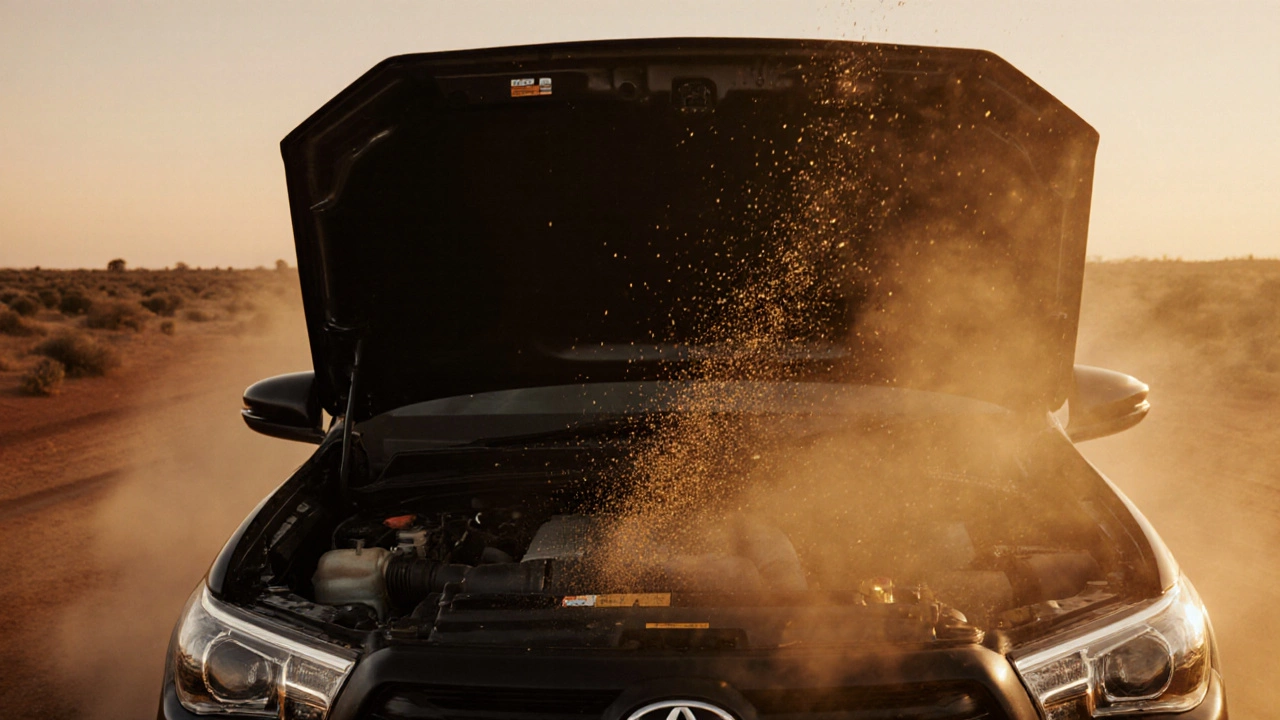
Who Actually Benefits?
Not most daily drivers. But here’s who might:
- Race car drivers - in controlled environments with clean air, high-flow filters help sustain airflow under high RPMs.
- Off-roaders - if you’re running a dual-filter setup or have a snorkel, a reusable filter makes sense for easy cleaning after muddy runs.
- Enthusiasts with modified engines - if you’ve upgraded your turbo, intake manifold, or ECU tune, then yes, a high-flow filter can help the system breathe better. But only if it’s matched to other mods.
If you’re driving a stock Honda Civic, Ford Ranger, or Hyundai i30? Stick with the OEM filter. You’ll save money, reduce risk, and get better protection.
Cost Over Time: The Real Math
A $15 paper filter lasts 15,000 to 20,000 km. You’ll replace it twice a year in Australia’s harsh conditions. That’s $30 a year.
A $80 performance filter lasts 50,000 km - but needs cleaning every 25,000 km. The cleaning kit costs $25. That’s $105 for the filter, plus $25 every 25,000 km. After 50,000 km, you’ve spent $130. That’s four times the cost of paper filters.
And that’s before you factor in the risk of sensor damage or engine wear. If your engine needs a rebuild because of a dirty air filter? That’s $5,000 to $10,000. No filter is worth that gamble.
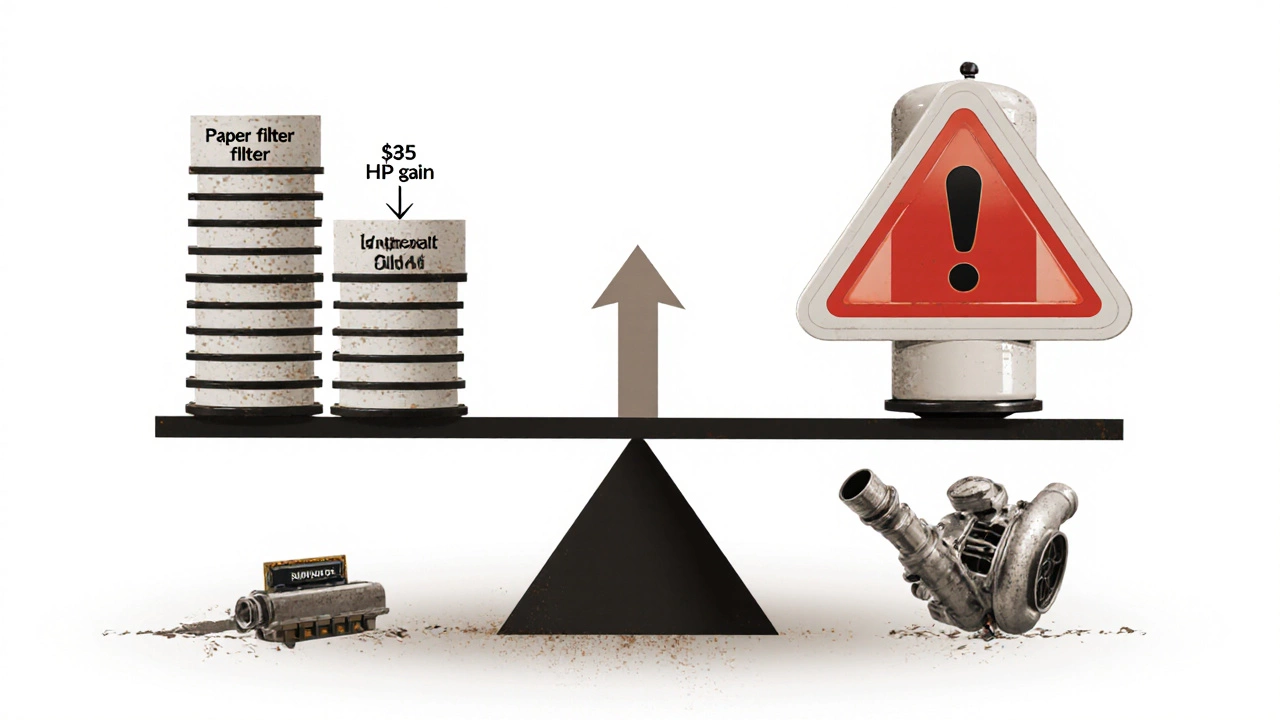
What About the Claims? “50% More Airflow!”
Manufacturers love to show airflow numbers in lab conditions. But airflow alone doesn’t equal power. The engine’s ECU controls fuel delivery. If you increase airflow without tuning, the system just runs leaner - which can cause knocking, overheating, or even detonation.
Real gains only happen when the whole system is balanced. A high-flow filter on a stock car is like putting racing tires on a family sedan - it looks cool, but it doesn’t make the car faster. It just makes it noisier and more expensive to maintain.
Alternatives That Actually Work
If you want real performance gains, here’s what delivers:
- ECU tune - adds 15-25 horsepower on turbo cars, with better throttle response.
- Free-flowing exhaust - reduces backpressure and improves efficiency.
- High-quality fuel - premium 98 RON fuel in a tuned engine makes a bigger difference than any filter.
Spending $80 on a filter while ignoring the ECU? You’re putting the cart before the horse.
Final Verdict: Should You Buy One?
For 95% of drivers - no. The risks outweigh the tiny, often invisible benefits. You’re paying for marketing, not performance.
For the 5% - track days, off-road rigs, or heavily modified engines - yes, but only if you’re committed to maintenance and understand the trade-offs.
Stick with OEM filters unless you’ve got a reason beyond looking cool under the hood. Your wallet - and your engine - will thank you.
Do performance air filters increase horsepower significantly?
On a stock engine, performance air filters typically add 3 to 5 horsepower at best - barely noticeable in real driving. Real gains only happen when paired with other modifications like a tuned ECU or upgraded turbo.
Are reusable air filters better for the environment?
They reduce waste since you don’t throw them out every 15,000 km. But the oil used to clean them is toxic, and improper disposal can harm the environment. OEM filters are recyclable in many Australian regions, making them a cleaner option overall.
Can a high-flow air filter damage my engine?
Yes - if it’s over-oiled, not cleaned properly, or used in dusty conditions. Fine particles can pass through and wear out turbocharger blades or clog the mass airflow sensor. Many engine failures linked to aftermarket filters are due to poor maintenance.
Do I need to re-tune my car after installing a performance air filter?
Not always, but it’s risky not to. The engine’s ECU expects a certain airflow. A freer-flowing filter can throw off the air-fuel ratio, causing lean conditions that lead to overheating or knocking. A tune ensures everything stays balanced.
How often should I clean a performance air filter?
Every 25,000 km in normal driving. In dusty or off-road conditions, clean it every 10,000 km. Skipping maintenance turns the filter into a dirt trap - worse than a stock paper filter.
Is it worth it to buy a performance air filter for a diesel ute?
Only if you’re towing heavy loads regularly or running a performance tune. Stock diesel intakes are already designed for high airflow. A high-flow filter won’t help much unless you’ve upgraded the turbo or exhaust. In dusty outback conditions, it’s a liability.

